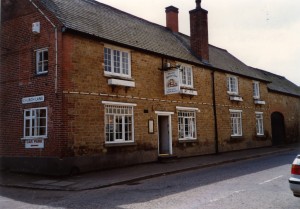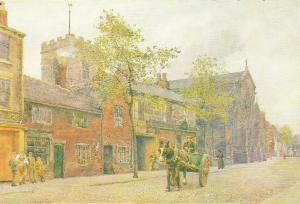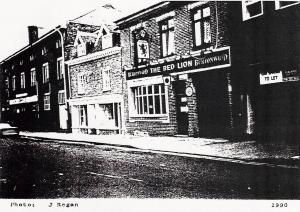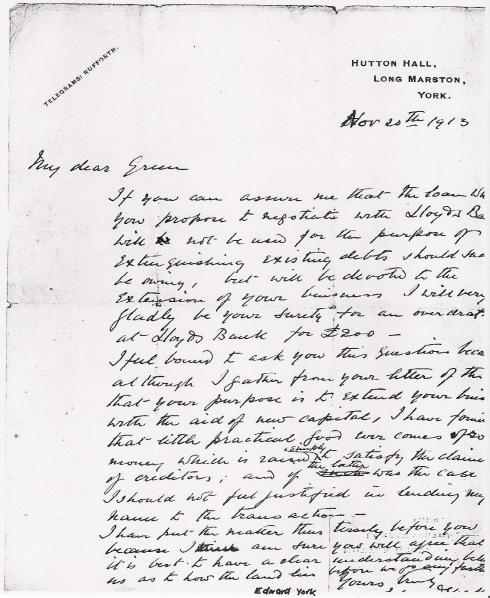 Life and times of John Thomas Green & Filomena Monti
Life and times of John Thomas Green & Filomena Monti
Highgate, London, England
Alfred was born in 1833, St Andrews, Holborn, Middlesex. He married Mary Elizabeth Goldsmith in approx 1855 in Islington, London. Known as Elizabeth, she was born in about 1838 in Islington, Middlesex, London. She was the daughter of Edward Goldsmith, a banker? And Mary, both born around 1816, St Pancras, Middlesex. Alfred and Elizabeth had a total of 10 children. In the late 1800’s Highgate had a high Jewish population so she could well have been of Jewish decent.
In the 1861 census the family resides at 22 Mornington Street, St Pancras , Marylebone, London. Alfred 26, Dairyman, Mary E., 22, Ann 3, (born in Notting Hill), Sarah 1, (born in Walsworth). Also listed is Edward Swinehow (servant), unmarried, 16 yrs, milkcarrier.
By 1871 they had moved to 13 North Hampton Grove, Islington, Highbury (Parish of St Pauls). Alfred, 37, a ‘cheesemonger’ and shopman, Elizabeth, 32, Annie 13, Sarah, 11, Emelia 9, Elizabeth 7, Henry 5 – all ‘scholars’, and Alfred 3, Kate 10 mths. Also listed is Amelia Swinehow, Alfred’s sister in law, 23 unmarried. She must have bee Edward Swinehow’s sister (now 26) but how were they related to Alfred? Also living in the same house was Charles Comber and his family, a ‘coachman’ and next door at no 14 was Richard summers, 20, a cheesemonger. Perhaps Alfred’s assistant?
 Their youngest child, William, (my great grandfather, above) was born in Upper Holloway, Islington in 1878. In 1881 when William was 3 yrs old, he and the family lived at 3 Nelson Place, Islington, in the Parish of St Mary’s. Alfred, now 47 is working as a ‘cab driver’ (horse drawn).
Their youngest child, William, (my great grandfather, above) was born in Upper Holloway, Islington in 1878. In 1881 when William was 3 yrs old, he and the family lived at 3 Nelson Place, Islington, in the Parish of St Mary’s. Alfred, now 47 is working as a ‘cab driver’ (horse drawn).
He continued in this profession for at least another 10 years for by 1891 we find them living at 19 Wedmore Gardens, ‘Groom or Front Cabman’, Edward a wooden box maker, Alfred a barbers assistant, Elizabeth and Kate, domestic servants, William 13 and Frederick 10 – scholars. I am unable to locate Alfred in the 1901 census, however Elizabeth 65, widow, is living with her daughter Elizabeth, 34, now married to Thomas Houghton, 33, a commercial clerk, born in Middlesex, New Smithgate. They are living at 12 Wyndham Cres, Islington.
Edward (Ted) eventually married Tilly. They had 3 children, Ivy, Ruby and Vera. Vera married Frank Scarf (Ann Witchelo’s mother’s Aunt see later.)Right: Vera.
 On 14th December 1894, William purchased his discharge papers from 17th Lancers. His trade at the time was ‘engineer’. Standing 5 ft 3/8 in, brown hair and eyes, he went to Dalston in Hounslow on 10th March 1898, a month before his 19th birthday, and enlisted with the Corps. of the 1st Dragoons of the Line, as a Private. The 1st Dragoons have a long distinguished military background serving as the King’s cavalry. On 31st October 1899 he boarded a ship bound for South Africa, where he spent 246 days fighting in the Boer War.
On 14th December 1894, William purchased his discharge papers from 17th Lancers. His trade at the time was ‘engineer’. Standing 5 ft 3/8 in, brown hair and eyes, he went to Dalston in Hounslow on 10th March 1898, a month before his 19th birthday, and enlisted with the Corps. of the 1st Dragoons of the Line, as a Private. The 1st Dragoons have a long distinguished military background serving as the King’s cavalry. On 31st October 1899 he boarded a ship bound for South Africa, where he spent 246 days fighting in the Boer War.
The Dunnottar Castle set sail from Southampton on Saturday 14th October 1899. The voyage proved monotonous apart from the company shared onboard. Along with Alfren Green was a young war corresspondant by the name of Winston Churchill. They stopped at Madiera to take on coal and land passengers. There they received news that the Boers had launched an invasion of both Natal and the Cape Colonies. . The ship arrived at Durban about the 26th November.
On Sunday 29th, 2 days before they were due to dock in the Cape, they saw the small tramp steamer ‘Australiasia’. Having left Cape Town 3 days earlier they rushed to the rails for news. There they saw a chalk board with the words “Boers defeated – 3 battles – Penn Symons [General] killed”. Their fear was that the war would be over by the time they got there.
At 9.15am Monday evening, in the pouring rain, the ship steamed into Cape Town harbour. They disembarked the following morning at 9am. By 5th November their fears were confounded by news from [Cecil] Rhodes that the Boers had landed a siege on Kimberly. Timing was critical in getting the one shipload of men that had just arrived, up the country. They had little supplies, not enough horses and were few in number and regardless, they went ahead of schedule. Transport was difficult and uncomfortable. Horses were shipped in from all over the world and battered by the time they reached the north from the long single gauge railway journey and the heat. These military planning inadequacies caused countless manouevering blunders and loss of life. At this stage the cavalry, led by Major General French was holding the line at Colesburg while Kimberly was secured. 1500 horses were lost in the relief of Kimberly.
Attention was next turned to the Battle of Colenso in which they were present but not heavily engaged. Moving on, they supported the crossing of the Tugela River near Ladysmith, Natal. The ‘Relief of Ladsmith’ took place form 15th December to 28th February 1900. On 15th December by 5.30am, the Royal Dragoons, under the command of Colonel Burn-Murdoch, had ridden down to the Tugela River bank as a patrol to protect Hart’s left flank. The Boers were dug into trenches on the otherside. Buller got caught in surrounding enemy fire and had to retreat. On 16th January huge thunderstorms had ironically made crossing the river easier. When the ‘turning movement’ by the west was attempted, the regiment was in the Mounted Brigade under Lord Dundonald. Much good work was done by the Mounted Brigade, particularly about 19th January 1900, when they captured about 40 Boers and seized important positions near Acton Homes.
By 23rd Jan they had been fighting for 12 hours a day for 4 days. On 11th Feb, Dundonald’s mounted brigade had found that the enemy, afraid of being cut off by the rain, had evacuated the south bank. Six of the cavalrymen stripped off, swam across the river and seized a ferry. They began to roll up the Boer outposts on the extreme left. Hussar Hill was, on Wednesday 14th Feb, reoccupied, after a race to the summit by Dundonalds men. They were then ordered to halt on 20th.
So far as they were concerned everything was done to command success in the second attempt to relieve Ladysmith, and the seizure of the positions about Acton Homes was entirely in accordance with the scheme of General Buller, a scheme which Lord Roberts said was well devised and should have succeeded.
During the battle of Colenso, the mounted brigade attacked Hlangwane. Now they were pushing up from Hussar Hill to Cingolo and Hlangwane again, 4 miles of tangled ridges. They eventually broke through and the Boers retreated. The cavalry was criticized for not charging out but going at a walk after the Boers running away. Most of the horses were on their last legs or had been eaten!
When General Buller retired after Spion Kop and Vaal Krantz, Colonel Burn-Murdoch of the 1st Royal Dragoons was left in command at Springfield to protect Buller’s left flank. On and after 22nd February most of these troops were brought down to Colenso to take part in the last great effort. Bloemfontain was occupied by the British on 14th March without much effort. During the whole month of February and up till this time the men and horses were practically starving. ‘The day of the cavalry charge was over’.
In his despatch of 14th March 1900, General Buller thus refers to the work of the mounted men: “During the whole of the fourteen days the 1st and 2nd Cavalry Brigades had kept our rear and flanks, their patrols extending from Greytown to Hongerspoort and Gourtown”.
During March 1900 peace talks were hanging in the balance. The final phase of the war was the radical idea of holding women and children in ‘refugee camps’ (holding hundreds of thousands of civilians living in cramped tented quarters.)
When General Buller advanced north through the Transvaal Burn-Murdoch’s brigade, including the 1st Royal Dragoons, was left to watch the Natal border, and for a considerable time was chiefly employed about the south-east corner of the Transvaal.
After a 26 day March form Bloemfontein to the Rand and Pretoria, Alfred returned home on 3rd July 1900. He was to spend 5 months recuperating before being shipped back again on 7th December 1900. Ten days later telegrams reported the invasion of the Cape Colony by 3000 Boers. A colony uprising forced them back up towards Bloemfontein and they were either killed or captured.
During January 1901 a line of fortified posts and bloackhouses strung together with barbed wire, was stretched across miles of veld. It had captured 2000 boers a month since March 1901.
In May and June 1901 the regiment, along with the 6th Inniskilling Dragoons, was in a column commanded by Colonel Pulteney which operated successfully in the Eastern Transvaal. In July “Lord Basing, with the Royal Dragoons, two guns, and a pom-pom, was engaged covering the construction of the Frederickstad and Breedtsnek line of blockhouses, and in keeping up communication thence to General Barton’s column” west of Krugersdorp.
In consequence of a concentration of Boers in the south of the Orange River Colony, Lord Basing and his men were brought by rail to Springfontein in August 1901, and thence proceeded to operate in the south-east of that colony.
Although a treaty was signed in 1902, the maintenance of control and peaceful settlement must have still been critical.
In the spring of 1902 the regiment operated about Ficksburg and Senekal, and afterwards in the Bothaville district and down the valley of the Vaal, “in the systematic work of clearance”. All this often involved sharp fighting and not a few casualties.
Alfred was wounded ‘dangerously’ in the chest on 7th March 1902 but he did not return to England till 26th July some 7 months later. He was discharged from the army ‘medically unfit’ on 31st March 1903 after 5 years and 22 days in service
For his gallantry he was awarded the South Africa War Medal. A family story says that he saved the life of his commanding officer, being shot at in the process. See a letter later to Edward Lloyd.
Due to his war experiences and unrecovered wounds, William must have been in a great deal of pain. He was known to have a very bad temper and to be heavy drinker – ‘drinking the business away’.
At the time of William’s marriage, in 1903, he was an electrical engineer. This possibly led him to be in Somerby where he met his future wife Amelia Kitchen. The Kitchens originally came from a small town near Leicester called Hoby. (In the mid 1800’s only about 300 people lived there.) They moved the Somerby when Amelia was a young girl, approximately 1870.
Frances William Kitchen and his wife Isabel Agnes Hobbes, had a public house called the William IV. However the 1881 census has them living at the ‘Three Crowns Hotel’, High Street Somerby, All Saints, Melton Mowbray, Leicester (called today the Brewery Inn). Francis, self-employed, 55, working as an ‘Innkeeper’ and it indicates he was born in Chilworth, Hampshire. Agnes (50) is the landlady of the Inn born in Somerset. Frank E 28, Amelia 23, Alfred E., 21, Arthur H., 20, Frederick C., 12 and Reginald S., 6 all living at home in the Inn (no occupants listed). Regi is listed as deaf and dumb from birth. Agnes Isabel Hobbes was originally from Somerset.
Amelia and William were married in the registrar’s office in Melton Mowbray (a township near North Somerby) on 3rd October 1903, they were both 25 years old. (Amelia was born on 28th Jan 1878, Hoby). They were living in Somerby, presumably still with her parents at the Inn.
The family moved to 54 Highcross Street, Leicester between 1903 and 1908, which was opposite ‘The Red Lion’ Tavern. Their house was above a shop and remains there today.
In 1911 William set up his own business as an undertaker. His premises were at 36 Belgrave Gate where, he, Amelia, Ruby, Ted, Alf and John lived for the next thirteen years.
Highcross Street, above 1903 and left 1800’s.
A letter to Edward York, below, William’s commanding officer, to Lloyds Bank, on 20th November 1913 shows William asking for a loan for 200 pounds for the purpose of extending his business – thus again presuming that of ‘undertaker’ – requiring Edward York’s referral. I gather the C.O. wanted assurance that it would be used for that purpose. The story goes that he approached it along the lines of “well I saved your life by stopping a bullet intended for you, so how about some sort of recompense”!


 Their youngest child, William, (my great grandfather, above) was born in Upper Holloway, Islington in 1878. In 1881 when William was 3 yrs old, he and the family lived at 3 Nelson Place, Islington, in the Parish of St Mary’s. Alfred, now 47 is working as a ‘cab driver’ (horse drawn).
Their youngest child, William, (my great grandfather, above) was born in Upper Holloway, Islington in 1878. In 1881 when William was 3 yrs old, he and the family lived at 3 Nelson Place, Islington, in the Parish of St Mary’s. Alfred, now 47 is working as a ‘cab driver’ (horse drawn). On 14th December 1894, William purchased his discharge papers from 17th Lancers. His trade at the time was ‘engineer’. Standing 5 ft 3/8 in, brown hair and eyes, he went to Dalston in Hounslow on 10th March 1898, a month before his 19th birthday, and enlisted with the Corps. of the 1st Dragoons of the Line, as a Private. The 1st Dragoons have a long distinguished military background serving as the King’s cavalry. On 31st October 1899 he boarded a ship bound for South Africa, where he spent 246 days fighting in the Boer War.
On 14th December 1894, William purchased his discharge papers from 17th Lancers. His trade at the time was ‘engineer’. Standing 5 ft 3/8 in, brown hair and eyes, he went to Dalston in Hounslow on 10th March 1898, a month before his 19th birthday, and enlisted with the Corps. of the 1st Dragoons of the Line, as a Private. The 1st Dragoons have a long distinguished military background serving as the King’s cavalry. On 31st October 1899 he boarded a ship bound for South Africa, where he spent 246 days fighting in the Boer War.






